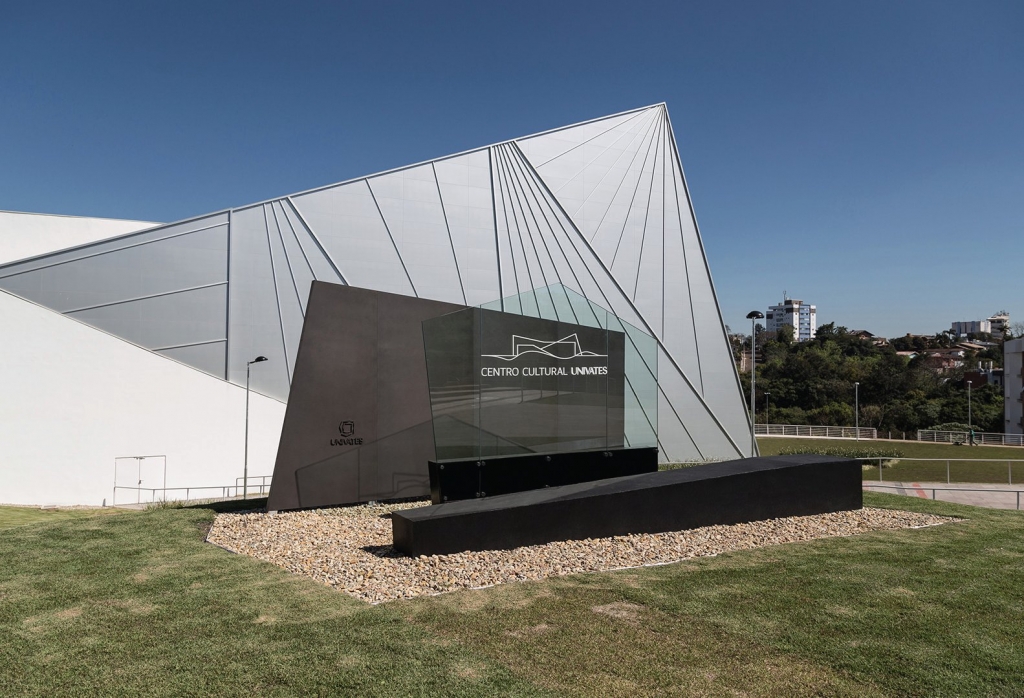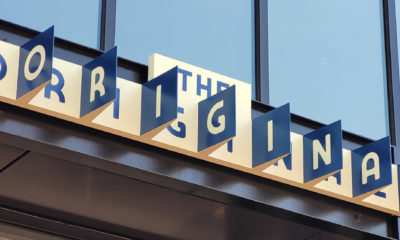People have preconceived notions about Brazil. Through characterizations in movies, one might get the impression that all Brazilians do is celebrate Carnival, play soccer and, well, celebrate Carnival.
As usual, perception doesn’t quite mesh with reality. With a 2013 GDP of $2.24 trillion, Brazil maintains the 7th-highest GDP in the world, so the country is clearly prominent among global economies.
With the country having hosted last year’s FIFA World Cup soccer tournament, and looking forward to entertaining the world at the 2016 Summer Olympiad in Rio, the world’s eyes are on Brazil.
Therefore, domestic infrastructure investment and economic growth have picked up significantly as the global recession has eased, and these landmark events draw closer. And, of course, economic growth stirs construction, which inevitably requires new sign programs. /STUDIOMDA, a Porto Alegre-based, wayfinding-design firm, has developed environmental-graphic systems nationwide for approximately 20 years.
“Most of our projects are new construction, but we’ve also been called frequently to solve visual-communication problems for clients’ existing locations,” Luciana Mattiello, /STUDIOMDA’s director, said. “Our experience has taught us a great deal about avoiding recurring signage problems.”
She said executing a successful wayfinding project requires extensive meetings and gleaning of information from a facility’s management, marketing teams, human resources, architects, engineers and security managers. Analagous to the ADA in the U.S., Brazil maintains the NBR 9050, a standard that establishes requirements for handicap-accessible signage. The firm designs its programs using a combination of Adobe® InDesign®, CorelDRAW® software.
Advertisement
Regarding wayfinding’s importance, Mattiello said, “Excessive and disorganized information creates a chaotic and confusing environment. Considering the pace of everyday life, this can be a big problem. To understand an environment and plan its information requires empathy for its users. That’s the core of effective wayfinding design. Organized information and uncomplicated routes contribute positively to people’s lives.”
During 2013 and 2014, /STUDIOMDA completed a program for Centro Cultural Univates, a cultural center for a university of Lajeado. Originally planned to include a library and theater, the facility expanded to include a café, orchestra hall and other amenities. Its entry focal point features an entry-monument sign made from thick glass, decorated with cut vinyl and supported on standoffs against a granite backdrop. Lupa Comunicação Visual built the signs.Vertical, metal pylon signs affixed amidst the property’s landscaping direct visitors indoors, and once indoors, wall-mounted graphics further instruct users. Maps outside the Centro’s elevators, room IDs, and numeric library-section markers reinforce its environmental graphics.
With a coastline as expansive as Brazil’s, marinas are naturally essential for commercial and recreational use. Ponta da Figueira Marina, a residential development in Eldorado du Sul, provides its homeowners with navigable waterways that feed directly into the Guaiba River, and reinforce the conventional pedestrian and vehicular wayfinding.
Working in partnership with the client, Melnick Even, Mattiello and her firm helped name halls, streets and other community amenities. Also, she said they used natural materials that would withstand Brazil’s volatile climate. As such, the sign’s support posts were hewn from hardwood, and the signs were made from aluminum and coated with vinyl and acrylic-polyurethane paint. /STUDIOMDA also created a dynamic identity for CFL Construcoes’ Jay, an upscale apartment and condominium development situated within Jurere International, which features many of Brazil’s luxury spas. Central Floripa Comunicação Visual fabricated the program.
“The buildings’ abundance of natural light and curved details inspired the shape of the pictograms and the typography,” Mattiello said. “Vibrant colors play a key role in identifying the environments.”
The property’s amenities include internally illuminated monument signs that identify each building, printed-vinyl graphics that span the elevator doors and their adjoining walls, and halo-lit room IDs.
Advertisement



 Tip Sheet3 days ago
Tip Sheet3 days ago
 Business Management1 week ago
Business Management1 week ago
 Women in Signs2 weeks ago
Women in Signs2 weeks ago
 Real Deal4 days ago
Real Deal4 days ago
 Editor's Note1 week ago
Editor's Note1 week ago
 Maggie Harlow2 weeks ago
Maggie Harlow2 weeks ago
 Line Time2 weeks ago
Line Time2 weeks ago
 Product Buying + Technology1 week ago
Product Buying + Technology1 week ago









